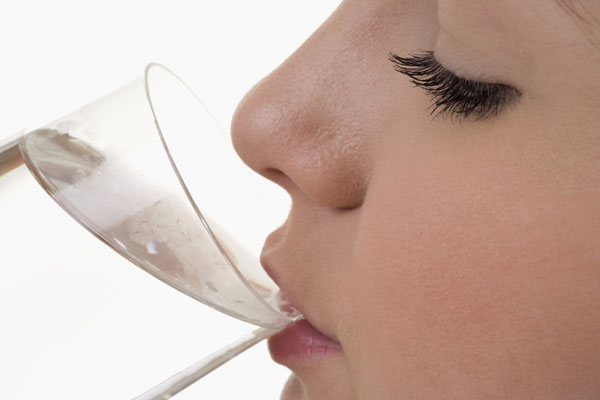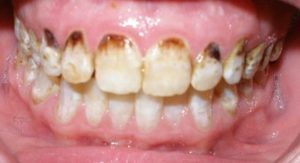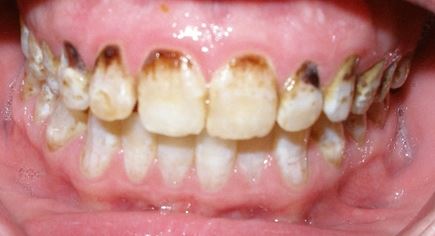WATER WOE: FLUORIDE IN OUR DRINKING WATER MAY BE DOING MORE HARM THAN GOOD


Don’t drink the water. It’s a phrase we commonly hear when we travel to a third world country, but in this case I’m referring to San Antonio’s public water supply. Wait, you say, doesn’t the Alamo City have some of the best water in the country? Yes, it did. That was before the citizens voted to add fluoride into our pristine water from the Edwards Aquifer in November 2000. (1)
The most important point I will make is that fluoride does not reduce tooth decay when ingested. If fluoride works at all, it only does so by topical application with toothpaste or fluoride rinses according to the Centers of Disease Control and Prevention, acknowledging the findings of leading dental researchers. Data from the World Health Organization (WHO) shows that decay rates worldwide have been falling without regard to the amount of fluoride in the water. For example, 97 percent of western European countries do not add fluoride to their water supplies. The main countries that add fluoride are Ireland, Australia, New Zealand and the U.S. The decay rates in these four countries are no lower than in non-fluoridated countries. (2)
The source of 90 percent of the fluoride added to the American water supplies is not pharmaceutical grade fluoride such as sodium fluoride. Instead, it is toxic industrial waste from the phosphate fertilizer industry. Phosphate ore contains 2-4 percent fluoride along with other toxins including mercury, lead, arsenic and radium. These elements once came out of smoke stacks of industry chemical plants. These plants now employ scrubbers in the stacks that bind the fluoride to silica to form hydrofluorosilicic acid, a corrosive acid that has never been studied for its safety, according to the Environmental Protection Agency (EPA). This is the type of fluoride added to San Antonio water. (3) This is happening in spite of the fact that the Federal Drug Administration (FDA) has never approved as safe or effective any fluoride product designed for ingestion. (2)
Another major problem with adding any type of fluoride into a public water supply is the dose that each person receives is impossible to control. People who drink more water than average such as athletes, manual laborers and diabetics consume more fluoride. The supposed ideal amount of fluoride in water is 1ppm (parts per million). San Antonio water has about 0.3 ppm naturally and because we live in a hot climate the target concentration is 0.8 ppm due to the assumption that we all probably drink more water than average. (1) It’s important to note that the American Dental Association (ADA) in 2006 advised that parents should avoid giving babies fluoridated water or use it to make baby formula.
One of the main persuasive arguments made to voters in 2000 in support of fluoridated San Antonio water was to prevent tooth decay in poor children. Certainly that is a noble cause. Unfortunately, research indicates that children with poor diets have increased levels of lead in their blood and brains when they are exposed to water fluoridation. This may explain some of the side effects of ingested fluoride such as learning disorders, lower IQ in children, neurological impairment, hip fractures later in life, arthritis, bone cancer, especially in young boys, and dental fluorosis.

Dental fluorosis is the first symptom of toxic fluoride overdose and occurs while the tooth forms in children. This produces white spots on the enamel in mild cases and brown or black spots and pits with deformation in severe cases. A major U.S. study found 30 percent of children in “optimally fluoridated” areas have fluorosis on at least two teeth. Other studies have found up to 80 percent of children affected. (2) As a dentist I can tell you that cosmetic dentistry to restore beauty to these teeth is very expensive, especially if porcelain veneers are chosen.
From my perspective, I believe that the best ways to help poor children are by improving their overall nutrition and reducing the amount of sugar they consume. I continue to be amazed that many adults still don’t realize that sugar causes tooth decay. And it doesn’t matter what type of sugar it is. Sucrose, dextrose, maltose, lactose (milk sugar), fructose (fruit) and high fructose corn syrup all cause tooth decay. Poor nutrition while teeth are forming weakens the teeth, leaving them more vulnerable to decay.
There is one natural sweetener, xylitol, that reduces decay. It kills the bacteria that creates acid on the surface of teeth when they are exposed to the other sugars. A Finnish study showed that when children chewed four pieces of xylitol-sweetened gum per day, their decay rate decreased by 93 percent. Xylitol can also be found in products like toothpaste and mints.
Learning more about fluoride in our drinking water is important. For further information:
(1) www.saws.org
(2) www.fluoridealert.org
(3) Personal communication with the San Antonio Water System (SAWS)
Here is an additional article explaining the impact of toxin exposure: https://childrenshealthdefense.org/defender/pandemic-cause-toxic-exposure/?utm_source=salsa&eType=EmailBlastContent&eId=7ed7b275-65e3-4348-86c4-e01270a7bceb

Dental fluorosis is the first symptom of toxic fluoride overdose and occurs while the tooth forms in children. This produces white spots on the enamel in mild cases and brown or black spots and pits with deformation in severe cases. A major U.S. study found 30 percent of children in “optimally fluoridated” areas have fluorosis on at least two teeth. Other studies have found up to 80 percent of children affected. (2) As a dentist I can tell you that cosmetic dentistry to restore beauty to these teeth is very expensive, especially if porcelain veneers are chosen.
From my perspective, I believe that the best ways to help poor children are by improving their overall nutrition and reducing the amount of sugar they consume. I continue to be amazed that many adults still don’t realize that sugar causes tooth decay. And it doesn’t matter what type of sugar it is. Sucrose, dextrose, maltose, lactose (milk sugar), fructose (fruit) and high fructose corn syrup all cause tooth decay. Poor nutrition while teeth are forming weakens the teeth, leaving them more vulnerable to decay.
There is one natural sweetener, xylitol, that reduces decay. It kills the bacteria that creates acid on the surface of teeth when they are exposed to the other sugars. A Finnish study showed that when children chewed four pieces of xylitol-sweetened gum per day, their decay rate decreased by 93 percent. Xylitol can also be found in products like toothpaste and mints.
Learning more about fluoride in our drinking water is important. For further information: www.fluoridealert.org.
(1) www.saws.org
(2) www.fluoridealert.org
(3) Personal communication with the San Antonio Water System (SAWS)
Here is an additional article explaining the impact of toxin exposure : https://childrenshealthdefense.org/defender/pandemic-cause-toxic-exposure/?utm_source=salsa&eType=EmailBlastContent&eId=7ed7b275-65e3-4348-86c4-e01270a7bceb

